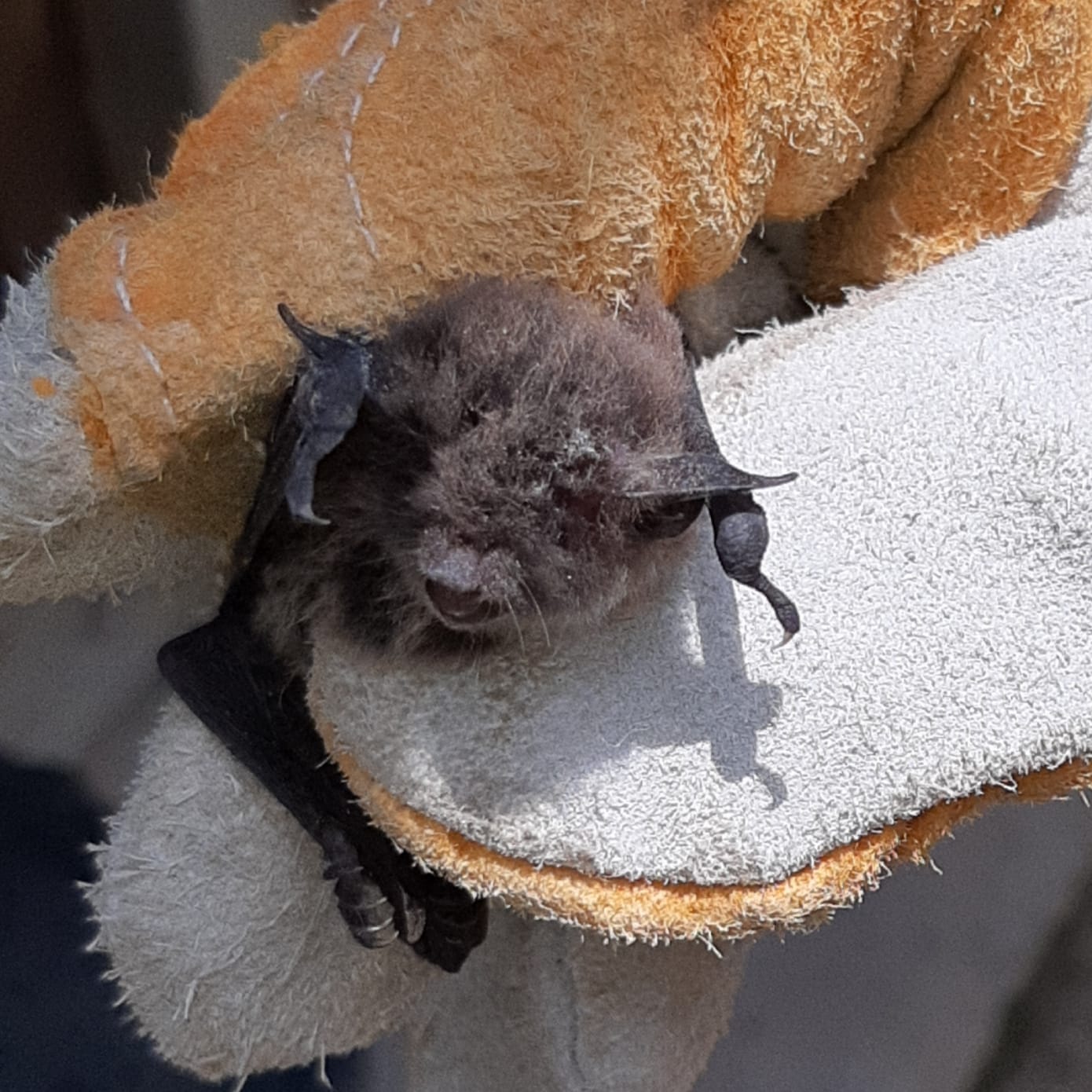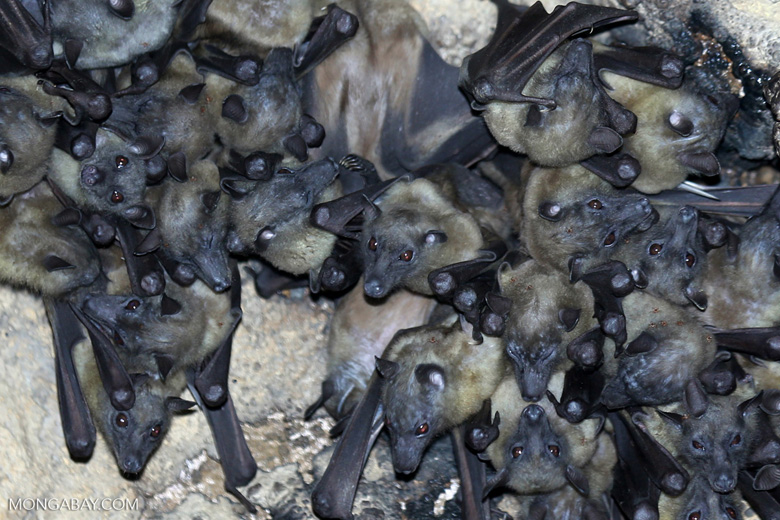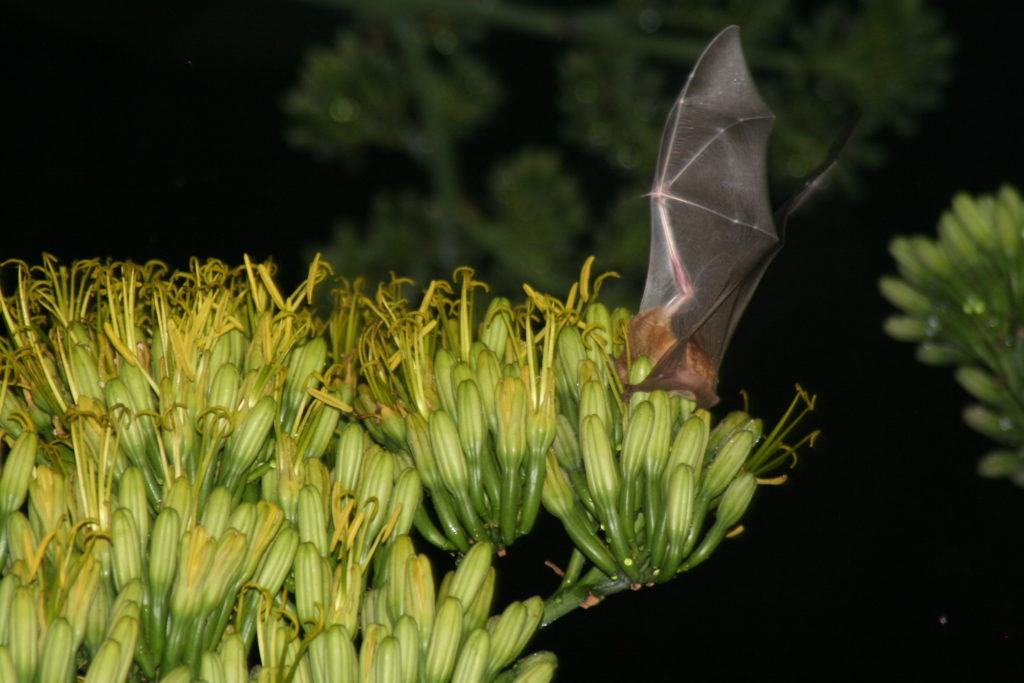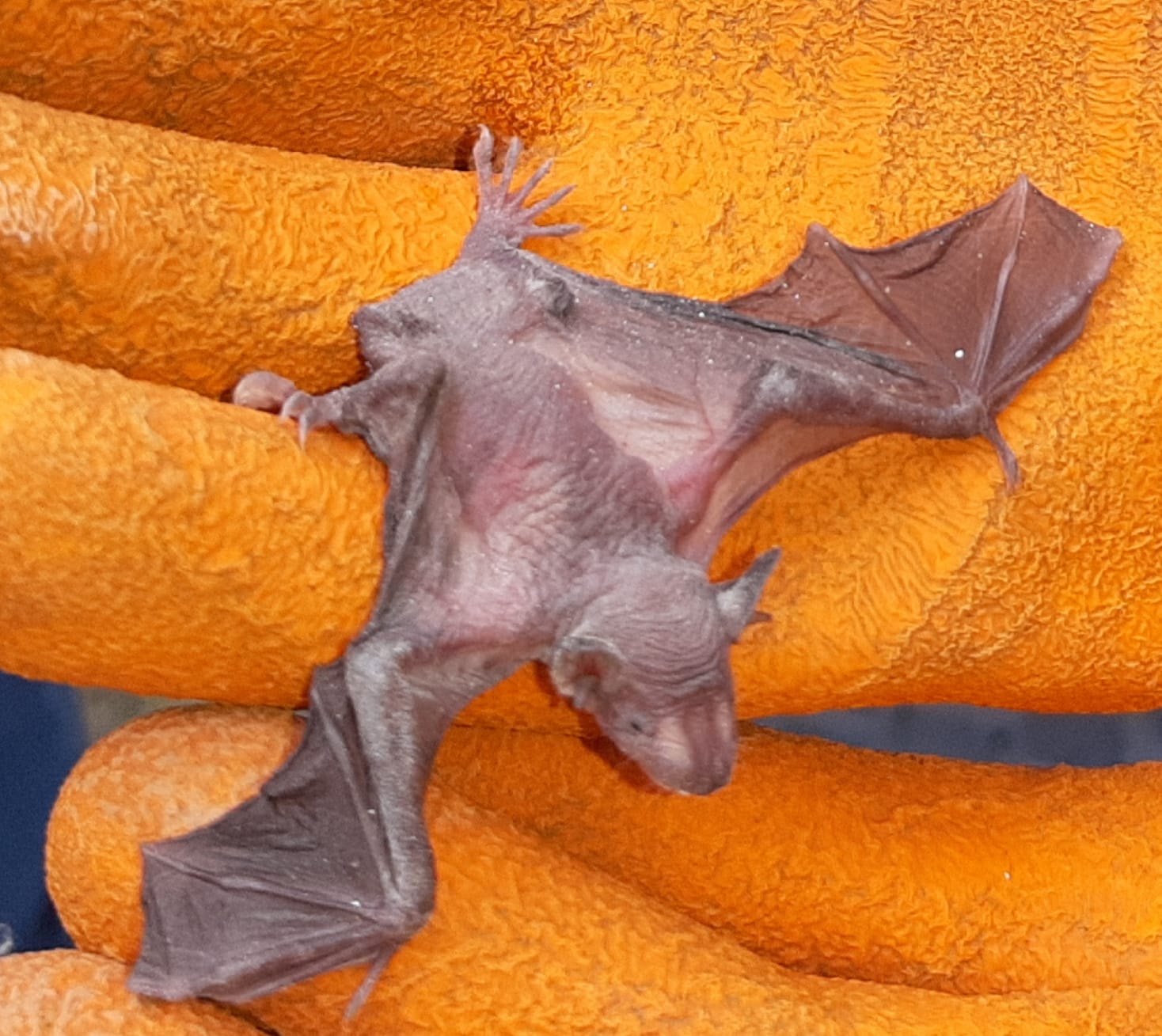- Despite the many benefits they provide to the planet, bats are subject to unjustified stigmas and beliefs.
- These are being further aggravated by a widespread belief that bats caused the COVID-19 outbreak.
- However, scientists say that bats are not responsible for the pandemic.
- Rather, wildlife trafficking and the destruction of ecosystems have increased the possibility of humans coming into contact with viruses present in various animal species.
The inhabitants of Culden village in northern Peru heard that the virus that causes COVID-19, the disease wreaking havoc around the world, originated in bats. So when they discovered a colony of these flying mammals close to their village, they decided to set fire to it. Officials of the National Forest and Wildlife Service (SERFOR) arrived at the scene before it was too late and managed to rescue almost 200 mouse-eared bats (genus Myotis). For their protection, the bats were taken to a cave far from the village.
The attack took place on the third weekend of March. The villagers targeted the bats because they had heard that the animals could transmit COVID-19, said Jessica Gálvez-Durand, director of sustainable management of wildlife heritage at SERFOR.

Several days after the attack, SERFOR was forced to reintroduce one of its bat protection campaigns to raise awareness of the benefits bats provide to humans and thus attempt to prevent further violence being carried out against them.
Bats have always had to deal with the consequences of human misconceptions about them. Folk stories have led to people setting their caves on fire, killing them, and even capturing them to use in supposed cures for diseases.
SERFOR officials are not alone in stressing the importance of protecting bats in recent times. Scientists have also come out in their defense, especially since it became known that COVID-19 is caused by a strain of coronavirus similar to those found in bats.
“This has aggravated the negative perception surrounding bats,” said Rodrigo Medellín, a researcher at the Ecology Institute at the National Autonomous University of Mexico (UNAM) and founder of the Program for the Conservation of the Bats of Mexico. “It is unfair. Bats are not responsible. On the contrary, every day they provide us with benefits that we do not give them recognition for.”
There are a little more than 1,400 known species of bats, which play a key role in ecosystems and the biodiversity of the planet. They are important pollinators, seed dispersers and pest controllers.

Bats and coronavirus
The first cases of COVID-19 were recorded at the end of 2019, near a seafood market that also sold wild animals — both live and dead — in the city of Wuhan, China. “These markets are a breeding ground for outbreaks of this kind,” Medellín said.
Science currently indicates that the SARS-CoV-2 virus that causes COVID-19 potentially originated in one of the animal species sold in this market. On March 17, researchers from the United States, United Kingdom and Australia published an article in Nature Medicine showing that SARS-CoV-2 was very similar to viruses present in bats and pangolins. However, they warned that it was still impossible to determine whether SARS-CoV-2 originated through natural selection in an animal and then jumped to a human, or instead originated through natural selection in a human after a precursor virus made the jump (called a zoonotic transfer) from animal to human. And it’s possible that one or more other animal species served as intermediate hosts before the virus got to humans.
This is not the first time that bats have come under the spotlight when a virus affects humans.
To understand why this is the case, it pays to remember that viruses are abundant, even more so than bacteria, and little studied. “It is estimated that there could be millions of virus families,” said Gerardo Suzán, a researcher at UNAM’s Ecology of Disease Laboratory. Suzán also noted that viruses have contributed to the evolution of species and that most of them do no harm.

The virus that causes COVID-19 belongs to the coronavirus family, which contains at least 40 different types of virus. Medellín said that, according to several studies, coronaviruses may have their evolutionary origin in bats.
In fact, Suzán said, in some species of bats scientists have found “at least 20 different types of coronavirus.”
Yet specialists agree that the fact that a variety of coronaviruses related to SARS-CoV-2 have been found in bats and pangolins does not make them guilty of unleashing this pandemic on the world.
“The enemy is neither the bat nor the virus,” Suzán said. “It is our own failure to maintain a healthy relationship with nature.”

Longevity and resistance
Bats have many characteristics that make them special and surprising animals. One is that they have developed an immune system that enables them to resist different types of virus, including coronaviruses.
Another is that they have exceptionally long lives. Depending on their size, bats can live 15, 20 and even more than 30 years. In Europe, for example, there are records of a bat that was recaptured 44 years after it was first documented, according to Luis Aguirre, a researcher at the Center of Biodiversity and Genetics of the University of San Simón, in Cochabamba, Bolivia.
“Understanding the biological and molecular aspects of bats could help us find the key to controlling viruses that affect humans,” said Aguirre, who is also the founder of the Program for the Conservation of the Bats of Bolivia.
Scientists are looking into whether bats’ longevity may be related to the regenerative capacity of their immune system as well as the mechanisms they have developed to coexist with viruses.

Invasion of niches and wildlife trafficking
Among all the coronaviruses carried by animals that have been identified so far, only seven are able to infect humans. Three of these can cause deadly diseases: SARS-CoV, which causes severe acute respiratory syndrome (SARS); MERS-CoV, which causes Middle East respiratory syndrome (MERS); and now also SARS-CoV-2, the cause of COVID-19.
Gerardo Suzán said there is increasing evidence that zoonotic diseases (ones transmitted from animals to humans) are related to “the drastic changes that we are making to the environment,” such as deforestation, the invasion of natural areas, and wildlife trafficking.
“We are dealing with viruses that we’ve never come into contact with before. We are invading places where these viruses are evolving with their host species. We are invading these niches,” he said.
Rodrigo Medellín reiterated the point. “It is our behavior, our habits of consumption, which have put us at greater risk of being affected by pathogens that we have not had contact with before,” he said.
Medellín recalled that the disease caused by the Ebola virus, first detected in 1976 in what are now the Democratic Republic of the Congo and South Sudan, spread among humans after they apparently came in contact with wild animals infected with a virus from the Filovirus family. And while some species of bat have been found to coexist with filoviruses, there is not enough scientific evidence to confirm whether bats were involved in the Ebola outbreak.

The first outbreak of SARS took place in 2003 in China. The coronavirus that causes this disease, SARS-CoV, also occurs in bats, especially fruit-eating bats. Today, many scientists believe that this virus was transmitted from bats to civets and then to humans, though the evidence of those connections is still murky.
Another coronavirus that was transmitted from animals (camels) to humans is MERS-CoV. The virus causes MERS, which was first reported in Saudi Arabia in 2012.
During the outbreak of SARS, various countries in Asia called for the culling of civets, bats and other wild animals to avoid the spread of the virus. Medellín recalled that members of the IUCN’s Bat Specialist Group sent letters asking governments to stop these campaigns. “Killing animals does not solve anything. It does the opposite. It creates other problems,” he said.
In the case of bats, if their populations were to decrease or any of their species were to go extinct, there would be severe consequences for the planet.

For example, insectivorous bats control pests that affect various crops, including cotton, corn, beans and rice.
Bats are also important seed dispersers. Luis Aguirre said they are “natural forest regenerators” because scientists estimate that more than 500 species of plants depend on bats to spread their seeds. Of these, an estimated 300-plus plant species depend exclusively on bats to be pollinated. The durian of Southeast Asia is one example. Without bats, durian fruit, one of the main sources of income for communities in this region, would not exist. The ceiba, a sacred tree of the Mayas, also depends on pollination by bats, as does the agave used to produce tequila and mezcal.

Science versus myth
Aguirre and Medellín agreed that after the COVID-19 pandemic it will be necessary to reinforce efforts to educate people about the ecological importance of bats and deconstruct myths that have led to people capturing them for food or medicine.
Aguirre said that in the Andean region of Peru and Bolivia people believe, in the absence of any scientific evidence, that an infusion made with bat parts can cure epilepsy.
Gálvez-Durand of SERFOR said that to prevent the use of bats “in practices of shamanism” and combat illegal bat trafficking, the agency launched a campaign a little more than two years ago.
Bats, which are tough enough to coexist neatly with viruses, are vulnerable to humans’ beliefs about them. What happened in Culden, Peru, is an example of this. The population of bats the villagers attacked will take several years to recover, Aguirre predicted. “They are at risk of extinction. While they live for a long time, their reproduction rate is extremely low: Females only give birth once every six to eight months,” he said, speaking about bats in general.

Other threats include the loss and fragmentation of bat habitat. An estimated 16-20% of bats are either at risk of extinction, endangered, threatened, or highly vulnerable, according to Aguirre.
Both to protect bats and to reduce the possibility of a new pandemic like COVID-19, Aguirre said scientists should emphasize the importance of stopping illegal wildlife trafficking, closing markets like the one in Wuhan, and protecting bat habitats. “Rather than blaming bats or the virus, we must recognize that it is our behavior that is putting us at risk,” he said.

Medellín, a member of the Fauna Committee at wildlife trade regulator CITES, said the organization will launch an initiative to raise awareness of the risk of illegal wildlife trafficking, especially in markets that sell wild animals, many of which are at risk of extinction, like the pangolin. Organizations like TRAFFIC and the Wildlife Conservation Society have also said on their websites that the COVID-19 pandemic should lead governments to crack down on markets where wildlife trafficking is a problem
In February, Chinese authorities announced a ban on the consumption of wild terrestrial animals and tightened measures against the sale of wildlife.
Medellín said he hopes these measures are not temporary. “If we are able to learn something from this pandemic, then we will be able to say that we have made some progress in the conservation and protection of animals like bats, pangolins and many other species that are sold in these markets,” he said.
Banner image of bats in their lair, by Rhett A. Butler/Mongabay.
This story was first published in Spanish on Mongabay Latam on March 31, 2020.
Correction: a reader alerted us that the colony of flying foxes was misidentified as “black flying foxes” so we switched to a more general caption.
Citation:
Andersen, K. G., Rambaut, A., Lipkin, W. I., Holmes, E. C., & Garry, R. F. (2020). The proximal origin of SARS-Cov-2. Nature Medicine, 26(4), 450-452. doi:10.1038/s41591-020-0820-9
